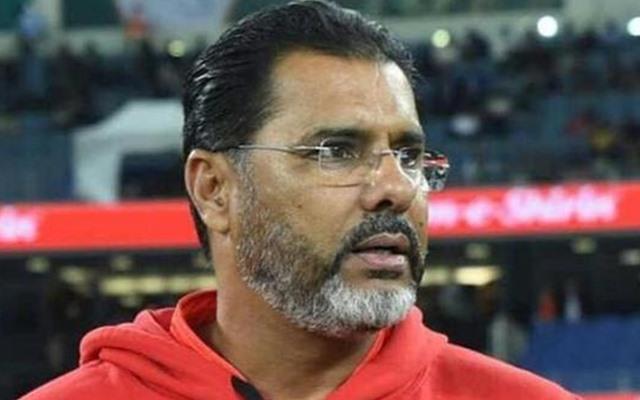Waqar Younis proposes rule change to bring back reverse swing in ODI cricket
Younis has proposed a change to the two new balls rule in ODI cricket, suggesting that one ball be taken out of play after 30 overs
View : 10.1K
3 Min Read


Amidst the surge in scores during the 2023 ODI World Cup, former Pakistani cricketer Waqar Younis has put forth an innovative idea to balance the scales between bat and ball in one-day internationals.
Younis has proposed a change to the two new balls rule in ODI cricket, suggesting that one ball be taken out of play after 30 overs. This would leave the other at the end of the innings with 35 overs, potentially allowing it to reverse.
“ODI cricket is too friendly for batters. Suggestion @ICC. 2 new balls to start, take away 1 ball after 30 overs, continue with the other. At the end that ball will only be 35 overs old. We’ll see some reverse at the end. Save the art of reverse swing,” wrote Younis on 'X'.
ODI cricket is too friendly for batters Suggestion @ICC 2 new balls to start, take away 1 ball after 30 overs, continue with the other. At the end that ball will only be 35 overs old. We’ll see some reverse at the end. Save the art of #ReverseSwing Comments please. pic.twitter.com/TQs5EZJy9Y
— Waqar Younis (@waqyounis99) November 13, 2023
The existing rule, implemented in October 2011, requires two new balls from each end, meaning each ball is only used for 25 overs. Critics argue that this setup heavily favours batters as the balls do not get old enough for reverse swing, giving batters an advantage in the latter part of the innings.
Younis's suggestion aims to reintroduce the art of reverse swing, making it relevant for fast bowlers during the crucial death overs. By starting with two new balls and then discarding one after 30 overs, the remaining ball would be 35 overs old by the end of the innings, potentially allowing it to reverse.
Mitchell Starc had echoed similar sentiments
Mitchell Starc recently shared a similar view. Speaking to Cricbuzz, Starc suggested that using only one ball in one-day matches is better than using two.
“I still think it should be one ball not two…The ball stays harder for longer,” said Starc, who has taken 10 wickets at 43.90 in the 2023 World Cup so far, a contrast to being the leading wicket-taker in the two previous editions of the competition. “As we’ve seen here, the grounds are quite small, wickets are flat. If anything in world cricket wickets have gotten flatter and I think if you look at some of that old footage when they bowled with one ball, reverse swing comes into it a lot more.”
Starc pointed out that having two new balls at the beginning doesn't help fast bowlers much because the usual swing doesn't last long. “I think just because of the two new balls at the start, I don’t think the balls swings any longer. They swing at the start and unless conditions suit, they don’t swing for very long at all. If anything they stay nicer for batsmen towards the end. So, with that one ball obviously there’s a chance to reverse.”
This proposal adds an interesting dimension to the ongoing debate about the evolution of ODI cricket, offering hope for fast bowlers to regain their effectiveness in the format.
Download Our App